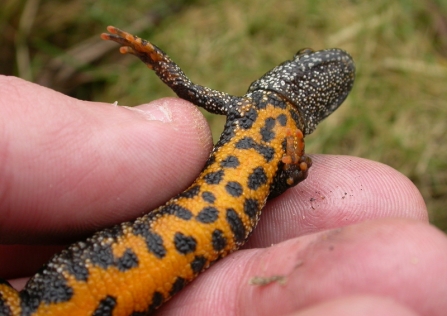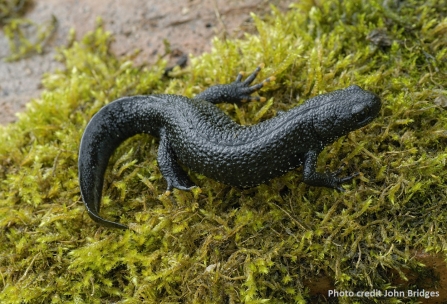Some species, however, may go more unnoticed as you are less likely to see them given the habitats they live in, take for example aquatic species. These species are just as busy attracting mates, feeding and producing young, but they are beneath the surface or most active during the night. If you’ve got a pond in your garden, you may have more of an inkling of what aquatic animals you may expect to see in Essex, but they can be quite tricky to spot in the wild. A fantastic amphibian you may have been lucky enough to see already is the Great Crested Newt (Triturus cristatus), the UK’s largest newt. Together with Smooth and Palmate Newts, all can be found inhabiting ponds in Essex.
Great Crested Newts are almost black in colour but they have a striking orange underbelly with black spots unique to each newt. Males have an impressive wavy crest along their back which dips at the base of the tail, this is more prominent during breeding season. Where females have an orange strip that runs the length of their tails, males have a white one, which makes them easy to spot when they scuttle away.



